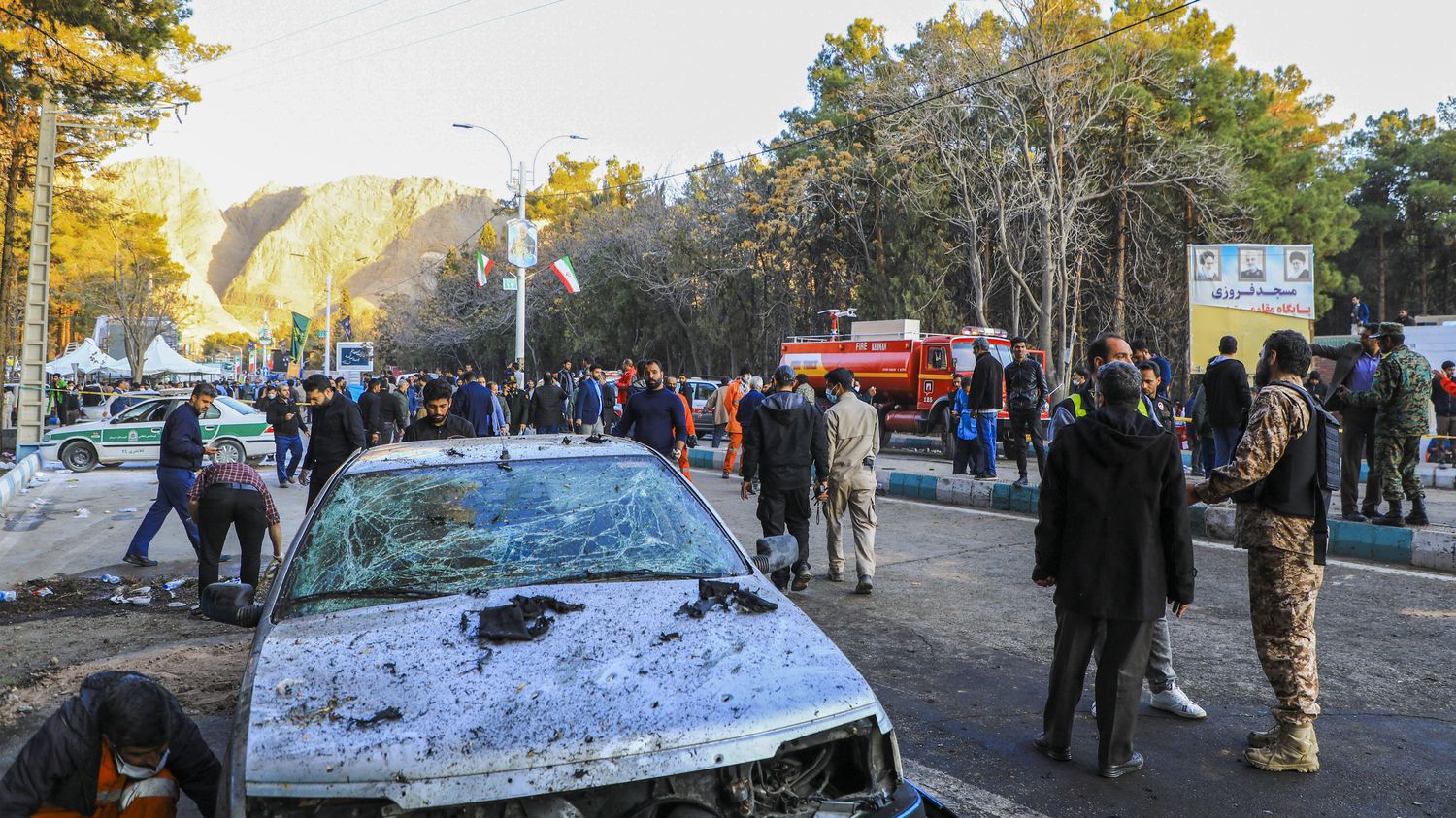In Iran, 84 people died Wednesday in a double explosion near the tomb of General Soleimani, assassinated by the United States four years ago. The attack was claimed by the Islamic State group.
Published
Update
Reading time: 4 min

Iran observes a day of national mourning on Thursday, January 4, the day after the attack which left 84 dead near the tomb of General Qassem Soleimani. A double explosion occurred near the Saheb al-Zaman mosque, where the tomb of General Soleimani is located, in Kerman, in the south of the country.
A first explosion occurred 700 meters from the tomb, the second a kilometer further, according to Iranian sources. A compact crowd of regime representatives and anonymous people were there for a ceremony in memory of the general, killed four years ago by an American strike in Iraq. Franceinfo answers four questions about this attack.
What do we know about the attack?
The Islamic State (IS) group claimed responsibility for the two explosions on Thursday via Telegram messaging. Before this claim, a political advisor to the Iranian president had designated Israel and the AndUnited States as responsible for this attack. The department ofEstate in Washington had judged “absurd” any suggestion of involvement of EUnited States or Israel. Iran’s sworn enemy, Israel, has not commented on the attack. “We are focused on fighting with Hamas”replied army spokesperson Daniel Hagari.
Iran’s Supreme Leader, Ayatollah Ali Khamenei, has promised a “severe response” to the attack, an act “odious and cowardly” for President Ebrahim Raïssi who canceled a planned trip to Turkey, according to state media.
The official death toll stabilized at 84 deaths on Thursday, after first reporting 103 then 95 deaths. The country’s emergency chief, Jafar Miadfar, told AFP televisionEstate that “284 people were injured, including 195 still hospitalized.” According to him, the degraded state of certain bodies after the explosion complicated the census of victims. Interior Minister Ahmad Vahidi warned that the death toll could rise, with some injured in a “critical state”. The Iranian government decreed on Thursday January 4 “national day of mourning” after the attack, the deadliest in Iran since 1978, when an arson attack killed at least 377 people in a cinema in Abadan.
Who was General Qassem Soleimani?
Qassem Soleimani was killed in January 2020 in an American drone attack in Iraq. A key man in the Iranian regime, he was also one of the country’s most popular figures. Architect of Iran’s regional power, he has sometimes been nicknamed the Shadow Commander.
Long considered a sworn enemy of Washington and its allies, Qassem Soleimani led the Quds Force, the external operations arm of Iran’s Islamic Revolutionary Guard Corps, overseeing military operations throughout the Middle East. Declared “living martyr” by Ayatollah Ali Khamenei, while he was still alive, Qassem Soleimani was celebrated for his role in the defeat of the Islamic State jihadist group in Iraq and Syria.
What are the reactions to the attack?
Hamas, supported by Tehran, castigated a “terrorist act (…) which seeks to destabilize the security of the Islamic Republic in the service of the agenda of the Zionist entity (Israel)”. For his part, Russian President Vladimir Putin denounced an attack “shocking in its cruelty and cynicism”and Chinese President Xi Jinping offered his condolences to his Iranian counterpart, expressing his “deep sadness”according to comments reported by the CCTV channel.
“I condemned this terrorist attack in the strongest terms and expressed (my) solidarity with the Iranian people”, communicated the head of European diplomacy Josep Borrell. Finally, the Secretary General of the UN, the European Union, France, Germany, Jordan and Saudi Arabia also condemned this attack.
What consequences for the region?
This attack occurred in a very tense regional context since the start of the conflict in October between Israel and Hamas, and the day after the elimination of Saleh al-Arouri, a senior member of the Palestinian Islamist movement in a strike near Beirut, attributed to Israel. The leader of Lebanese Hezbollah, Hassan Nasrallah, warned Israel against a further escalation of violence: “For the moment, we are fighting on the front in a calculated manner (…) but if the enemy thinks of launching a war against Lebanon, we will fight without limits, without restrictions and without borders (…) We are not afraid the war “did he declare.
For his part, the chief of staff of the Israeli army Herzi Halevi indicated that his troops were on alert on the northern border with Lebanon, an almost daily scene of exchanges of fire since the start of the war between Israel and Hamas. Since the start of this conflict, tensions have also increased in Syria and Iraq, where American bases have been targeted, but also in the Red Sea, where the Houthi rebels in Yemen are carrying out attacks to slow down maritime traffic in “support” in Gaza.
It is precisely to ease tensions that the head of American diplomacy, Antony Blinken, is preparing to undertake a new tour of the Middle East, the fourth since the start of the conflict between Israel and Hamas.
